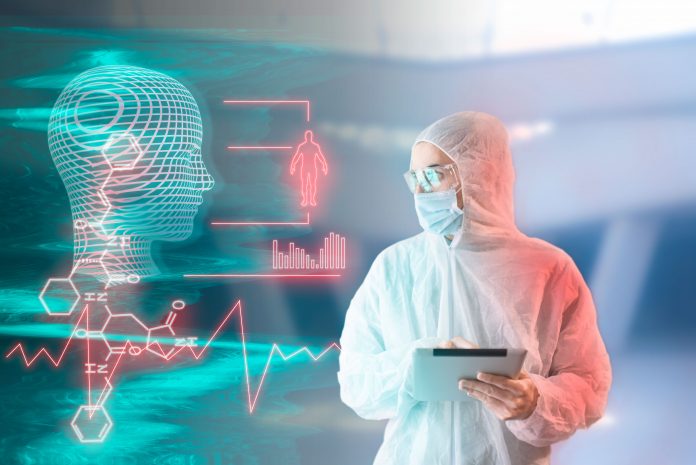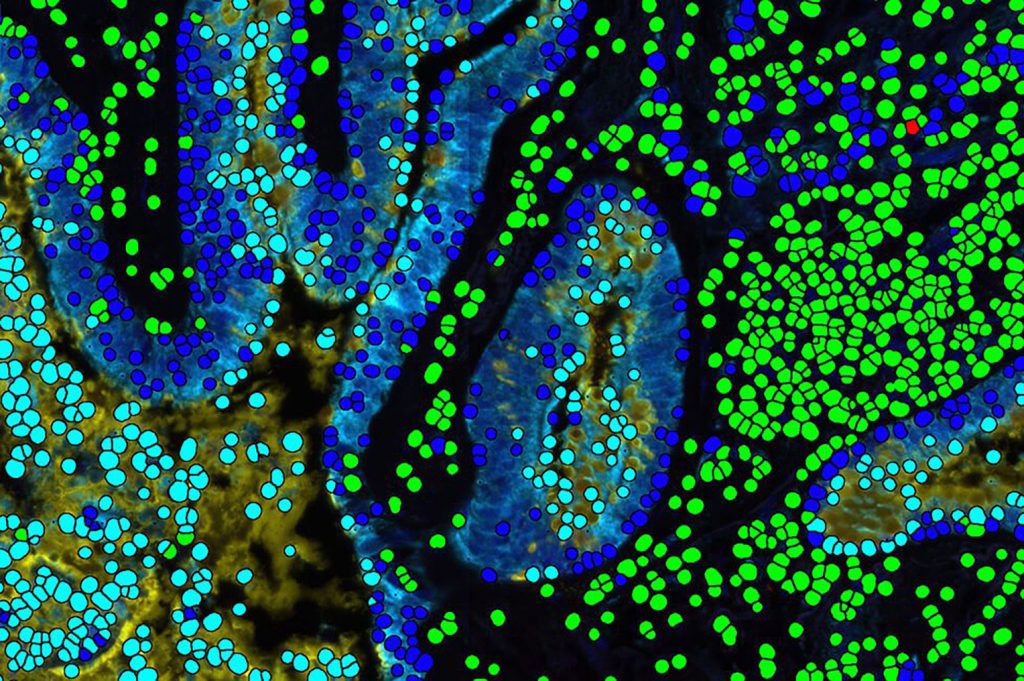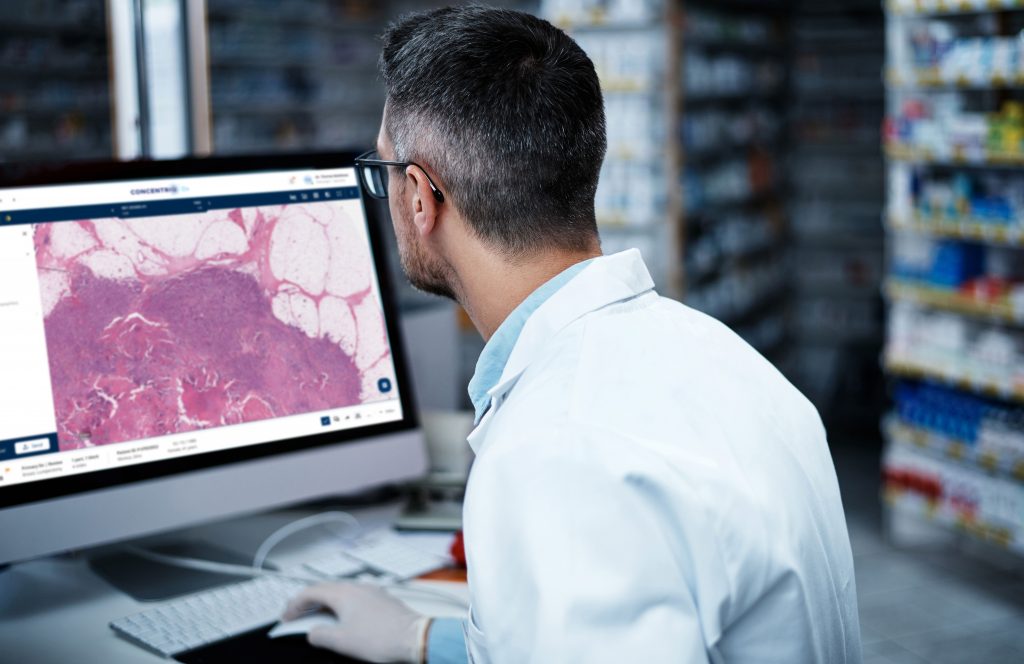
Artificial intelligence (AI) was perhaps overhyped when it was first applied for improving diagnostics, clinical decision support, and therapeutic target identification. Its reputation as a game-changer was likely sullied by the promise—and subsequent lack of meaningful results—of IBM’s Watson. Nevertheless, AI today is used in myriad ways to improve diagnostic and therapeutic pathways for patients and its uses are expanding. But can it really help to achieve widespread application of precision medicine and how far are we from reaching that goal?
We have more sources of information today than ever before. This is particularly true in medicine. In the past a clinician saw a patient, talked to them, and wrote down any symptoms that they were experiencing, storing this information in a paper medical record.
In the post-genomic era, in addition to standard symptom data, blood biomarkers, tissue histology, and more traditional imaging data, a patient may also have genomic, metabolomic, proteomic, and transcriptomic information available for analysis by their doctor, among other measures. This information glut is difficult, if not impossible, for individual clinicians to analyze and use without some form of automated analysis. This is where artificial intelligence (AI) comes in.
“There is a huge amount of data out there. We can learn much more about patients than we ever could even when we imagined the Human Genome Project 20 years ago. The challenge is how best to use it to benefit patients and lower the cost of health care and that is AI, it’s analytics, it’s new methodologies around that,” Steve Gardner, CEO of PrecisionLife, a company applying AI and advanced mathematical models to the problem of treating complex diseases, told Clinical Omics.
Use of AI for medical applications such as digital pathology, prognosis prediction, and drug design has gradually crept into the clinic over the last decade, but its use is still far from mainstream. For the use of this technology to become routine, there are a number of challenges that still need to be overcome.

“The technology is at a point today where there is massive potential for the technology as it stands to make a huge impact… even without some of the incredible advances that we’re expecting to see in AI and machine learning over the next decade,” commented Nathan Buchbinder, co-founder and chief product officer at Proscia, which has a focus on AI and digital pathology.
“What needs to happen more urgently than anything else is demonstrating that what we have today works in practice and scale it up from there,” he added.
Realizing AI’s potential
AI as a field of study first began in the 1950s. It progressed slowly, with many techniques attempted and failures recorded, leading to a so-called ‘AI Winter’ of low interest and funding that began in the early 90’s and lasted nearly 20 years.
Since 2010, interest and funding in AI has increased dramatically. Significant advances in AI methods have been developed, such as advanced image recognition, that can be applied to improve patient outcomes. Machine learning, which was originally derived from AI and allows programs and software to ‘learn’ over time, has also improved dramatically.
Over the last few years, several related technologies have advanced rapidly, making it possible for companies and researchers to start using AI in medicine to greater effect.
“The technology that’s powering these computational applications has improved over the last three years. Even more recently than that, it’s opening up a whole new avenue of approaches that you can take to build technology that finds hidden patterns that weren’t detectable before,” said Buchbinder.
Other advances, such as high-scale and affordable cloud computing, and high-throughput, low-cost biological data acquisition technologies, like next-generation sequencing, have also come together to boost AI-based medical approaches and make them more achievable for companies to develop.
Last year was a bumper year for AI in medicine and digital health more generally, which had an increase in investment of 45% compared with 2019. The technology also advanced significantly. For example, at the end of 2020 Google’s AI Spinoff DeepMind had achieved a breakthrough and used AI to determine a protein’s 3D shape from its amino-acid sequence.

“Not so long ago, this was seen as one of the major challenges in computational biology,” commented Arie Baak, co-founder and president of Euretos, an AI company helping biotech and pharma companies design better drugs.
Most approaches using AI in medicine fall into those that improve patient diagnosis and outcome prediction, and those that improve drug development by making it easier to find suitable targets and to predict how specific individuals will respond to therapy.
Digital pathology is a good example of a diagnostic area using AI that has advanced dramatically in the last few years. Proscia and companies such as Paige.ai, Path.ai, and others are making good use of advances in image recognition to improve diagnoses for patients with cancer and other conditions that require pathology assessment.
“What we saw when we started the company was that the field of pathology, for the last 150 years, really hadn’t changed substantially, with pathologists looking at tissue embedded on glass slides under the microscope,” said Buchbinder.
“While that practice has fueled an amazing amount of innovation and discovery, there’s a whole opportunity that comes once slides are digital, once you overcome some of the limitations that you get working with physical tissue.”
Use of this kind of imaging tool can help pathologists to pick up cellular changes hard to see by eye alone. Use of AI means that millions of reference images can be scanned almost instantly to look for similarities or differences to an image from a specific patient, which has the potential to improve and speed up diagnoses while also to improving treatment for diseases like cancer.
Greater access to advanced single-cell technology has led to cell-based approaches being adopted. For example, Cytoreason focuses on cell-level models of human disease and claims to have one of the world’s largest libraries of human molecular data. The company has partnerships with many big pharma companies like Roche, Sanofi and Pfizer, which are using its models to develop better and more targeted drugs.
Deepcell, in contrast, uses microfluidic single-cell technology and machine learning to analyze and sort cells without bias both for diagnostic and research purposes. “The first problem we are tackling is the lack of adequate markers for specific applications. Using supervised learning techniques, Deepcell can train AI models to identify specific cells and cell types at high performance by just imaging them,” the company’s Chief Medical Officer, Tom Musci, told Clinical Omics.
“A second problem we are solving is the pressing need to improve the cost and complexity of single cell analysis,” Musci added. “There are known technical issues associated with staining and labeling cells, as well as inevitable errors in human judgment.”
AI is being used extensively by companies such as Exscientia, Sema4, and Euretos, among others, to develop new therapeutics through a variety of methods. These include finding new drug targets, repurposing drugs originally developed for other purposes, and improving the precision medicine approach by developing advanced models of how patients respond to different diseases and available treatments. Exscientia has already brought three drugs to clinical testing using its technology, including a treatment for Alzheimer’s disease psychosis, which recently entered Phase I clinical trials in the U.S.
Some areas of medicine lend themselves to AI-based applications more than others. For example, oncologists are already applying precision medicine technologies, such as genetically targeted therapies, more than any other specialty. The large amount of data already available and the enormous need for new drugs and diagnostic tools means many AI-based approaches are already being applied in this space.
Precision Life is taking on the challenge of creating models of complex, chronic diseases such as dementia, schizophrenia and metabolic disease to analyze disease risk and help predict therapy response.
“We’re trying to take the premise of precision medicine out of being something that is aligned to oncology and rare diseases and apply it to all of those more complex chronic diseases that actually cost the health systems so much money to treat, and where there are still huge pools of unmet medical need within the patient populations,” said Gardner.
Overcoming challenges
Although AI is already helping to make precision medicine a reality, there are several challenges that need to be overcome before AI-based technology can become more widespread in clinics and medical laboratories.
A problem with any system using AI is that it is only as good as the data is uses but also how it has been designed to use that data. AI works well if it can access a high volume of good quality data in a well-designed, unbiased model, but that is not always the case.
“Labs only really started going digital a few years ago and so there isn’t that massive trove of pathology information sitting at every site, or every laboratory that’s already digital,” said Buchbinder. “What that means is that if you’re looking to develop a new AI application, you have to find sites that are already digital, or that can digitize very quickly.”
Proscia recognized this shortcoming and is addressing it by helping pathology labs to digitize their collections.
Helping clinicians and life scientists accept and understand AI-based tools is another potential challenge to overcome, as AI is complex and persuading people to trust the technology has proved difficult in the past.
“There are cultural issues. If you are going to present a tool to clinicians, it has to be able to explain how it’s come to a decision,” notes Gardner.
Genome-wide association studies and, to a related extent, polygenic risk scores have a known problem with diversity, as most of the original populations that were tested were from a white, European background. This can also be a problem with AI-based applications, depending on where the data is sourced from.
“One of the tendencies of traditional AI and machine learning approaches is to replicate signals that they’ve seen before, and that can lead to unintentional biases in the models,” said Gardner. “So they work better in one population, or one gender, than they do in others.”
Many clinicians are used to relying on medical regulatory agencies such as the FDA and EMA to judge whether a drug or device is of good enough quality to guide their treatment decisions, but the fast speed of AI and other advanced computing technology development has tended to run ahead of the regulators.
However, over the last couple of years the FDA has made a commitment to research and investigate how these kinds of AI-based tools can be regulated. Scott Gottlieb, the former commissioner of the FDA, formed a set of principles to help assess and evaluate AI-based applications—including those that learn over time—before he left the agency.
“It’s something which is a radical departure from the traditional regulatory thinking. But which today is an absolute must have,” said Buchbinder.

David Harel, CEO of Cytoreason, agrees and adds that the COVID-19 pandemic has also helped to make regulatory agencies more open to the use of AI-based tools.
“CytoReason built a model of acute respiratory distress syndrome (ARDS) in the lung and we took all the drugs of our customers and we gave them the option to match the response of their anti-inflammatories on ARDS for free to see if there was a match,” he explained.
“Six months before COVID-19, nobody believed that the FDA would approve something using efficacy data that was generated in a computer simulation. We got an emergency approval, and a clinical trial was initiated based on that data.”
Another hurdle for companies developing AI-based tools is that although the technology has the potential to save a lot of money in the long run, it can be, at least initially, an expensive investment for laboratories or drug developers.
When it comes to reimbursement from the insurance companies, that can also be problematic for tools or tests that have a preventative purpose.
“The reimbursement model pays for a test and the test is oriented to a treatment. The incentives are not really well aligned to prevent disease and provide early interventions that might lead actually keep people well,” says Gardner.
Can AI help realize better precision medicine?
Despite the challenges to widespread adoption, there is little doubt that AI in medicine is here to stay.
“In the last three years, we’ve gone from bench to bedside, we’ve gone from applications that were in discovery to applications being evaluated and deployed into routine clinical practice. And this is a huge deal for the industry,” says Buchbinder.

“My take is that this is moving in the right direction,” added Harel. “But let’s not let’s not rush it because there’s so much work to be done on the R&D side.”
A report published in June week by the World Health Organization, entitled the Ethics and governance of artificial intelligence for health, advises that AI “holds great promise” for improving healthcare around the world, as long as ethics and human rights are taken into account in its design.
“Like all new technology, artificial intelligence holds enormous potential for improving the health of millions of people around the world, but like all technology it can also be misused and cause harm,” said WHO Director-General Tedros Adhanom Ghebreyesus, in a press statement about the report.
Looking to the future, it seems likely AI will play a role in more integrated healthcare where multiple datasets are incorporated into connected electronic patient records and diagnoses and treatment decisions are made based on analysis of this data.
“That’s where I think AI has potentially the biggest impact to play,” emphasized Buchbinder. “Because you start to find new trends. When you combine a pathology image, a radiology image, and other imaging and non-imaging data, you find new trends that no individual specialist is trained to look at.”
AI certainly has potential to make patient diagnoses more precise, both by making them more accurate and avoiding false positives.

“Take the case of mammograms,” said Musci. “False-positive mammograms can cause anxiety and often lead to unnecessary tests such as MRIs, ultrasounds, and interventions. About half of the women getting annual mammograms over a 10-year period will have a false-positive finding at some point. Reducing this would definitely save time, money, and alleviate anxiety.”
In drug development, we are just at the beginning. “There is a whole raft of novel drug discovery, programs that can be initiated, because we’ve identified novel targets,” said Gardner. “There are lots of different areas that it will impact. I think in five- or 10-years’ time, we’ll be asking ‘why are we still using tools that aren’t using some level of AI in precision medicine?”













